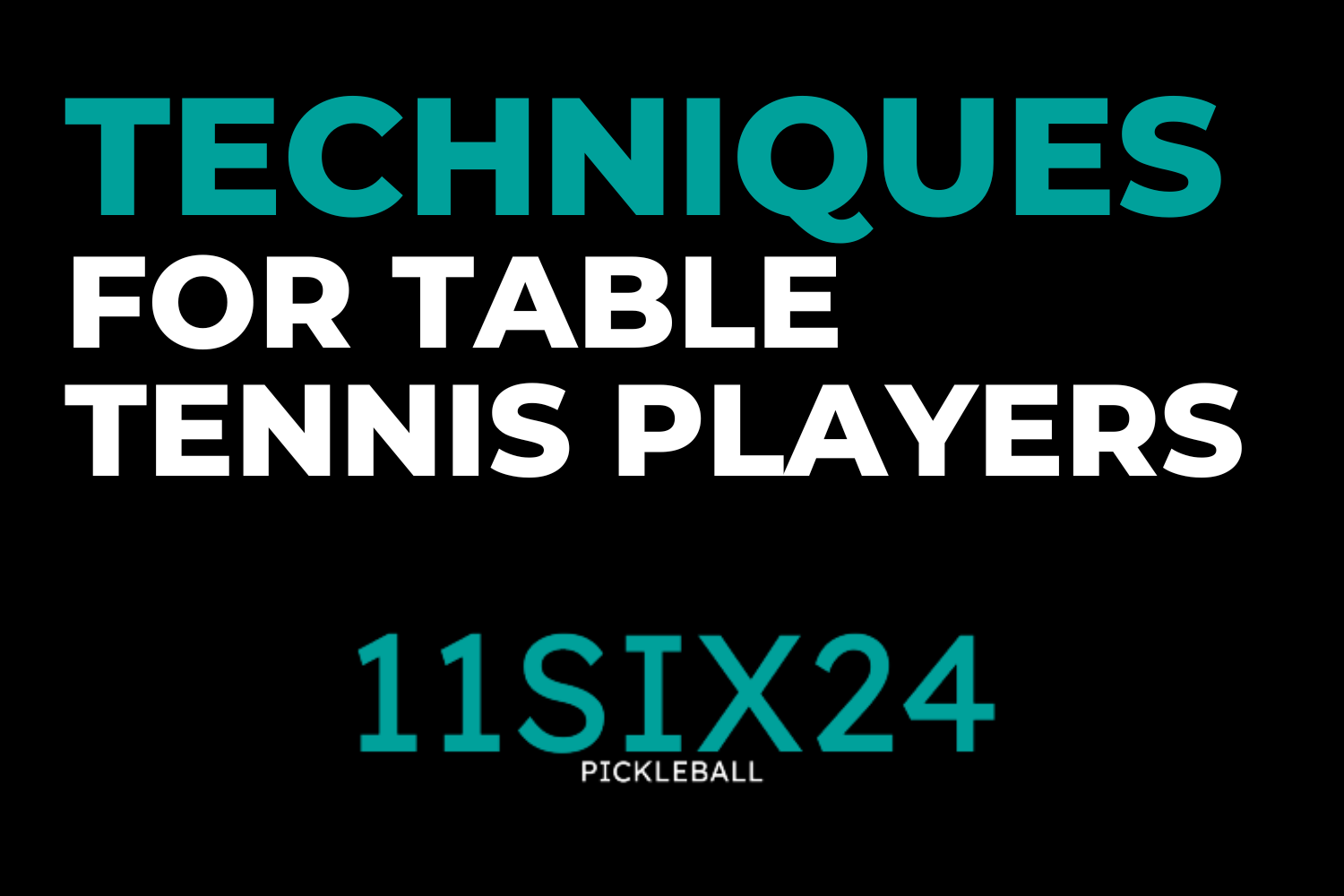Pickleball Training Techniques for Table Tennis Players

If you're a table tennis player looking to make the transition to pickleball, you're in luck! Many of the skills and techniques you've developed in table tennis can be transferred to the pickleball court. However, there are some differences between the two sports, which means you'll need to adjust your approach and learn some new techniques to become a proficient pickleball player.
In this blog post, we'll explore some of the best pickleball training techniques for table tennis players. By following these tips and integrating them into your practice, you'll be well on your way to mastering the game of pickleball.
Adjusting to the pickleball paddle and ball:
The first major difference you'll need to adapt to is the pickleball paddle and ball. Pickleball paddles are larger and have a different shape compared to table tennis paddles. The ball is also larger, lighter, and has holes, which can affect the way it bounces and spins.
To get comfortable with the new equipment, spend some time practicing basic shots like dinks, volleys, and groundstrokes. Focus on getting a feel for the paddle and how it interacts with the ball.
Master the dink shot:
The dink shot is a crucial part of pickleball strategy and is not found in table tennis. This soft, controlled shot is played just over the net and is designed to drop into the non-volley zone (kitchen). The goal is to force your opponent to hit the ball upward, which sets you up for an attacking shot.
To practice the dink shot, start by standing near the net and gently hitting the ball back and forth with a partner. Focus on keeping the ball low and aiming for the non-volley zone.
Improve your footwork:
While table tennis requires quick and agile footwork, pickleball demands a slightly different set of movements. One key difference is the need to move laterally along the non-volley line during dinking rallies.
Incorporate lateral movement drills into your training sessions to help you get comfortable with this aspect of pickleball footwork. For example, set up cones along the non-volley line and practice moving side-to-side while maintaining proper body position and balance.
Develop a strong third-shot drop:
Another important skill to develop in pickleball is the third-shot drop. This shot is used to transition from the baseline to the non-volley zone and is crucial for setting up effective dinking rallies.
To practice the third-shot drop, stand at the baseline and aim to hit a soft, high-arcing shot that lands in your opponent's non-volley zone. Focus on generating backspin to help control the depth of the shot.
Adapt your serve:
While the table tennis serve is all about spin and deception, the pickleball serve is relatively straightforward. However, you can still use your serving skills to your advantage.
Try experimenting with different serving techniques, such as varying the speed, depth, and placement of your serves. This will help keep your opponents off balance and set you up for success during the point.
Transitioning from table tennis to pickleball can be an exciting and rewarding challenge. By focusing on these pickleball training techniques, you'll be able to leverage your table tennis skills and quickly become a strong pickleball player.
Remember to be patient and give yourself time to adjust to the new sport. With consistent practice and a dedication to learning the nuances of pickleball, you'll soon find yourself enjoying the game and competing at a high level. Happy playing!

